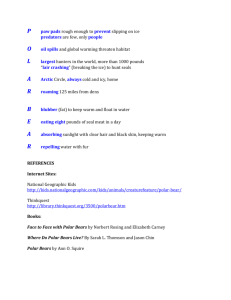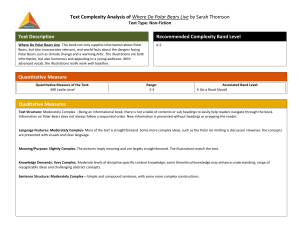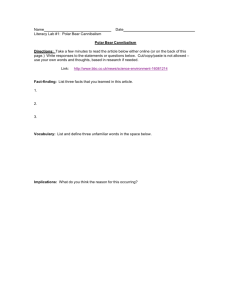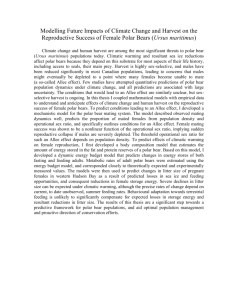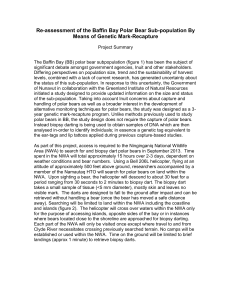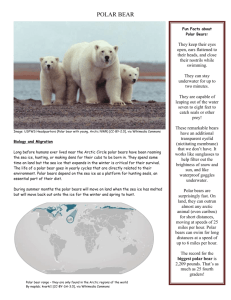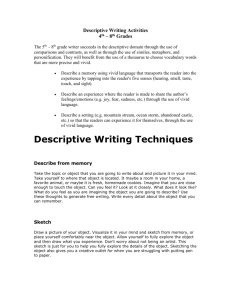0224 Sample Main idea writing from the literacy test
advertisement
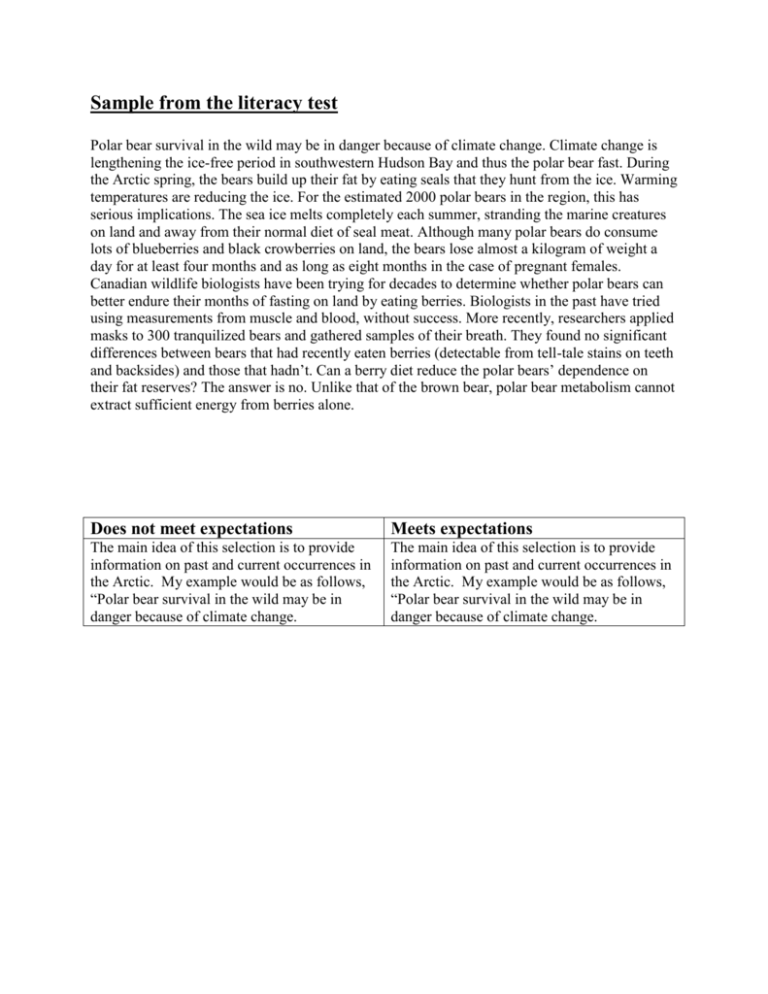
Sample from the literacy test Polar bear survival in the wild may be in danger because of climate change. Climate change is lengthening the ice-free period in southwestern Hudson Bay and thus the polar bear fast. During the Arctic spring, the bears build up their fat by eating seals that they hunt from the ice. Warming temperatures are reducing the ice. For the estimated 2000 polar bears in the region, this has serious implications. The sea ice melts completely each summer, stranding the marine creatures on land and away from their normal diet of seal meat. Although many polar bears do consume lots of blueberries and black crowberries on land, the bears lose almost a kilogram of weight a day for at least four months and as long as eight months in the case of pregnant females. Canadian wildlife biologists have been trying for decades to determine whether polar bears can better endure their months of fasting on land by eating berries. Biologists in the past have tried using measurements from muscle and blood, without success. More recently, researchers applied masks to 300 tranquilized bears and gathered samples of their breath. They found no significant differences between bears that had recently eaten berries (detectable from tell-tale stains on teeth and backsides) and those that hadn’t. Can a berry diet reduce the polar bears’ dependence on their fat reserves? The answer is no. Unlike that of the brown bear, polar bear metabolism cannot extract sufficient energy from berries alone. Does not meet expectations Meets expectations The main idea of this selection is to provide information on past and current occurrences in the Arctic. My example would be as follows, “Polar bear survival in the wild may be in danger because of climate change. The main idea of this selection is to provide information on past and current occurrences in the Arctic. My example would be as follows, “Polar bear survival in the wild may be in danger because of climate change. Sample from the literacy test A little-known but interesting example of Northern Ontario’s history is the school on rails. By the 1920s, mining and forestry settlements were scattered along the network of railway lines of Northern Ontario. A few towns had grown large enough to pay for their own schools, but the outposts could not afford such “luxury.” In 1922, a North Bay school superintendent pushed for an experiment to bring schools to these remote settlements by converting passenger rail cars into classrooms. These cars contained desks, blackboards and books and a small apartment for the teacher. After being on display at the Canadian National Exhibition (a major fall fair) in Toronto, the first two cars left for northeastern Ontario in 1926. For four days at a time, the cars rested at railway sidetracks in the tiny communities. Children hiked or came by horse and sled several kilometres for their education, and at night the school car became a place of learning and social activity for adults. The experiment was so successful that seven cars were in operation by 1938. However, during the 1950s extensive highway construction turned many trackside towns into deserted settlements. In 1967, one of the last school cars was shuttled into a Toronto rail yard. But that was not to be its final stop. The people of Clinton, Ontario, purchased the well-worn car to honour their fellow citizen Fred Sloman. Sloman, the car’s last teacher, taught on railway cars from 1926 until his retirement in 1965. Today the restored car tells its story of Northern Ontario life, as a museum in Clinton. Does not meet expectations Meets expectations It is important that if kids can’t get to school, the school comes to them. Since many towns couldn’t afford to build their own schools, this was an easy way to still get their kids educated. Since the nearest schools were so far away, the kids had no way of getting there. But now, all it took them to get there were horses, skis or their feet. In the 1920’s, some Northern Ontario communities could not afford schools. A North Bay superintendent came up with an idea to convert a passenger car into a classroom and bring the education to the adults and children.
